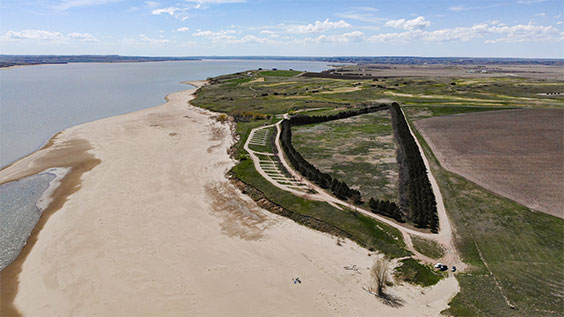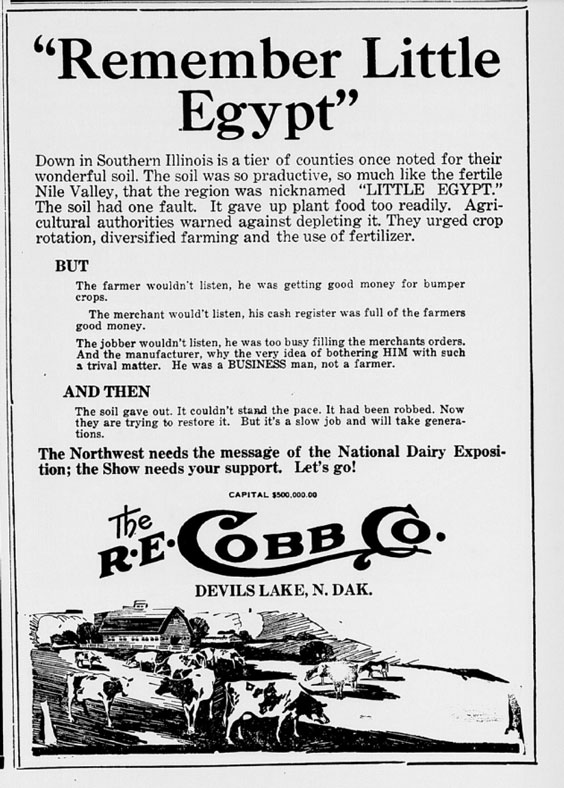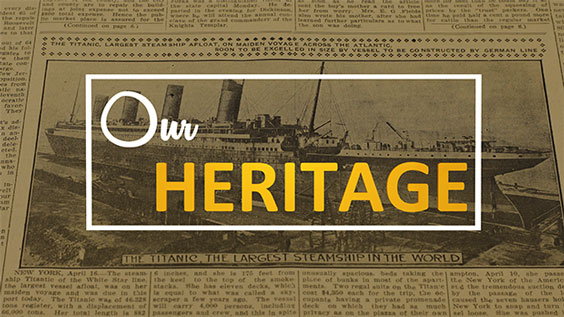Why is Egypt in North Dakota?
One day while I was working at the State Archives, a patron approached the reference desk and asked me why Little Egypt Park, located in Williams County, was called Little Egypt? The person was interested in finding out why and how the park ended up with that name. I was intrigued myself, as I couldn’t think of any historical or geographical reasoning behind the name and set to work searching through various resources at the State Archives. This is what I found.
Little Egypt Park, located 30 miles south of Ray on Lake Sakakawea, features picnic areas, camping, and direct access to the lake so visitors can boat, fish, and swim at the park as well. In the late 1980s, plans were made to improve the park by creating a swimming area and bathhouse as well as upgraded picnic shelters and camping areas. And that’s all I was able to find. I looked through the State Archives resources I knew of, including “The Wonders of Williams: A History of Williams County, North Dakota,” local newspapers, and collections relating to parks and the creation of the parks, with no luck. This was odd, since it is common to find information about a park’s origins or name significance in our collections. Feeling stumped and not sure where else to search, I asked other State Archives staff members if they had any ideas, perhaps they had researched Little Egypt Park in the past. Shane Molander, the state archivist, reached out to State Historical Board member Richard Stenberg, an associate professor in the Arts and Human Sciences Department at Williston State College, with my question and provided me with the first lead I had so far: The old-timers in Williams County would say that the land had good soil or dirt. But what was the connection?

The sprawling Little Egypt Park on the shores of Lake Sakakawea. Courtesy Williams County
This research got me thinking about how and why place names were chosen during European immigration and settlement in the Midwest and Western states. The capital city of Bismarck is famously named in honor of German Chancellor Otto von Bismarck. A settlement in Traill County was given the name Little Chicago, and later in Dunseith, Little Chicago of the West was formed in the hopes that it would soon rival the city in Illinois. Towns across the Midwest were named Little Norway or Little Sweden by Norwegian or Swedish immigrants. So what inspired the people of Williams County to choose Little Egypt as their new park’s name? Continuing my search, I started looking for places named Little Egypt outside of North Dakota to see if any other information could be gathered about this interesting place name.

I came across this advertisement during my search for Little Egypt place names. The Devils Lake World, October 4, 1922, p. 15
Southern Illinois is nicknamed “Little Egypt,” with several towns in the southern half of the state named after Egyptian cities. This nickname was inspired by comparisons of the geographic features of the Mississippi River and flood plains of southern Illinois to the fertile Nile Valley in Egypt. Poor harvests in the northern regions of the state also contributed to this nickname, as the land in southern Illinois provided food relief to the struggling north during the winter of 1830-31.
Suddenly the dots began to connect. The “good dirt” that the old timers in Williams County thought the name came from could have been an allusion to the fertile soil found in that region of the county or to the fertile soil they hoped the region would have. The name also evokes the feeling of a prosperous community, like the settlers in Little Chicago would have wanted. Or perhaps people from southern Illinois settled in Williams County and chose to name the park after their home in Illinois. One single answer may not exist with multiple inspirations possible. But as it doesn’t appear the reason for the name was recorded, my quest continues.


